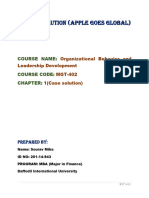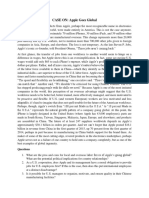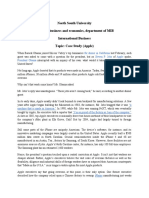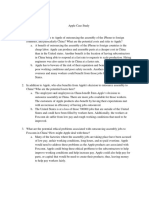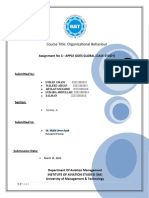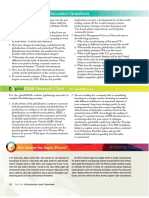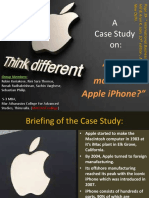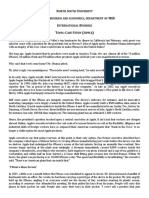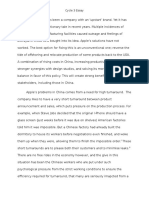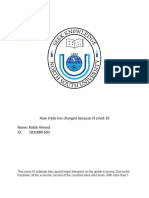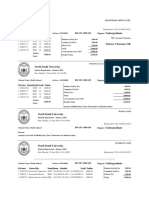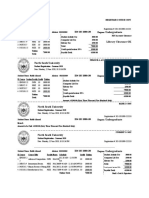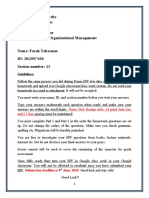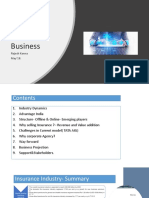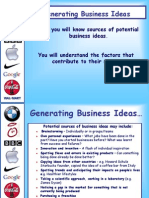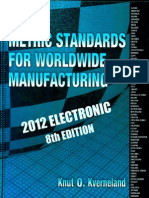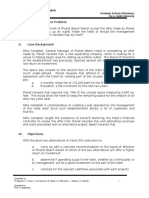0% found this document useful (0 votes)
212 views6 pagesApple iPhone Manufacturing in China
The document is a case study submitted by a group of students to their professor regarding Apple's production of iPhones in China. It provides several key reasons for Apple outsourcing assembly of iPhones to China, including lower labor costs, greater production efficiency, government subsidies, and proximity to suppliers and growing markets. However, outsourcing production also carries some risks for Apple such as loss of control over innovation and vulnerability in the US-China trade war.
Uploaded by
Rabib AhmedCopyright
© © All Rights Reserved
We take content rights seriously. If you suspect this is your content, claim it here.
Available Formats
Download as DOCX, PDF, TXT or read online on Scribd
0% found this document useful (0 votes)
212 views6 pagesApple iPhone Manufacturing in China
The document is a case study submitted by a group of students to their professor regarding Apple's production of iPhones in China. It provides several key reasons for Apple outsourcing assembly of iPhones to China, including lower labor costs, greater production efficiency, government subsidies, and proximity to suppliers and growing markets. However, outsourcing production also carries some risks for Apple such as loss of control over innovation and vulnerability in the US-China trade war.
Uploaded by
Rabib AhmedCopyright
© © All Rights Reserved
We take content rights seriously. If you suspect this is your content, claim it here.
Available Formats
Download as DOCX, PDF, TXT or read online on Scribd
/ 6
